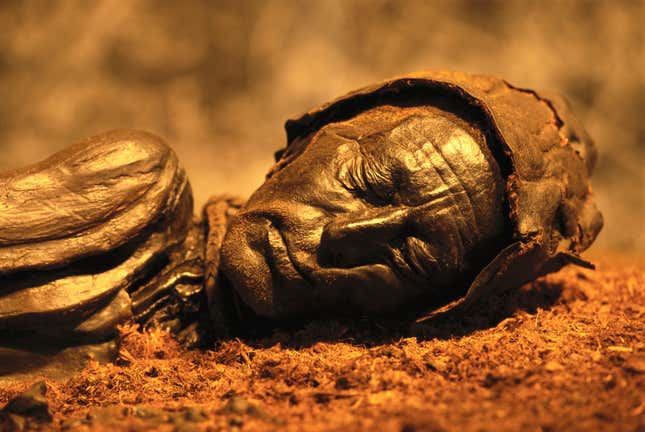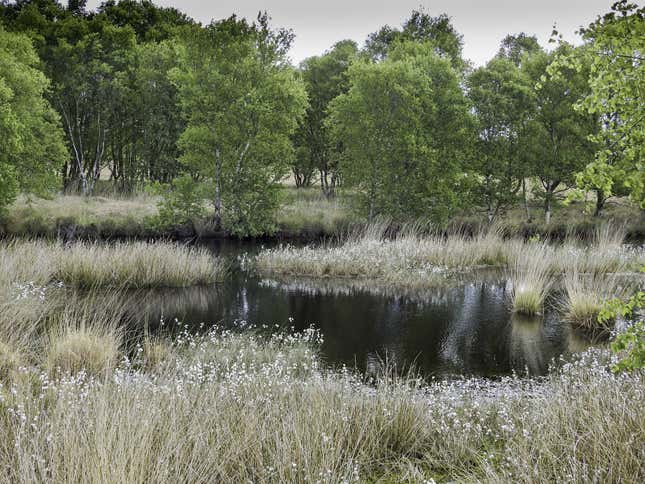We Have No Choice But to Stan Bog Mummies
They may be 2000 years old, but ancient bog bodies continue to enthrall everyone from academics to TikTok creators.
In Depth
Image: Christophe Boisvieux
TikTok creators often make “get ready with me” videos, inviting viewers to look on as they comb their hair, apply makeup, and don their OOTD (outfit of the day). But in their take on the viral trend, Ella Rockart was wearing a look inspired by an OOTD that’s survived more than two millennia. “Get ready with me,” they said, “except it’s 350 BCE and I’m about to be a human sacrifice—at least that’s what some historians think.”
@myweeklyarn Here she is! #bogbody #archaeology #ironage #historicalcostuming #historicalfashion #history #bogwoman #bog
Huldremose Woman, the bog body whose Iron Age fashion Rockart recreated, was discovered in Danish peatland in the late nineteenth century. She’s one of hundreds of mummified corpses that have been pulled from bogs in countries like Denmark, Germany, and Ireland, inspiring decades of scientific research and art by figures as illustrious as Nobel laureate Seamus Heaney and as obscure as pseudonymous internet poets. If you’re not of a squeamish bent, the misshapen faces and bodies of these ancients can hold a powerful allure—one that, among contemporary social media users, seems to most often attract the interest of non-binary people and women.
Bog bodies, “are very much like us, we can see ourselves in them,” University of California, Berkeley professor and Bodies in the Bog and the Archaeological Imagination author Karin Sanders told me. “And at the same time, they’re not. They have become something else, mummified remains from a past that we know very little about.”
“There is something about that tension,” Sanders said. “They spark our imagination and we fill in all the blanks.”
What is a bog body?
While decomposition can reduce a human body to a skeleton within just a few months of death, peat bogs, which are highly acidic and low in oxygen, can inhibit bacterial decay while tanning human flesh like leather. Corpses pulled from bogs have been so well-preserved that they’re mistaken for recent murder victims despite being thousands of years old. Some bog bodies, like Tollund Man, Grauballe Man, and Yde Girl, are among the best-known mummies in the world, but they’re not the only remnants of the past that peatlands have yielded. Bogs have also preserved artifacts like wagons and grave goods in Denmark, and hundreds of pounds of bog butter in Ireland, which may have been left as an offering to the gods or placed in the bogs for their preservative properties, like an Iron Age refrigerator.
And despite being very old and rather gruesome—or perhaps because of this—bog mummies have found fans on social media. On TikTok, more than eight million people have viewed Rockart’s Huldremose Woman videos since they began posting them late last month. “Oh to be mysteriously found in a bog,” one young woman commented on Rockart’s original video. On Tumblr, one user dressed up as a bog body this Halloween (though people kept mistaking them for an “Irish zombie”), while another created a sketch of perhaps the most famous bog body, Tollund Man.
-

-

-

-

-

-

-

-

-

-

-

-

-

-

-

-

-

-

-

-

-

-

-

-

-

-

-

-

-

-

-

-

-

-

-

-

-

-

-

-









































